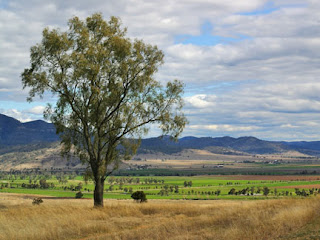The astronomical symbol for the earth is a circle with a
“plus sign” in the middle. In a way it
summarizes the human reality of living on the earth. It may be a sphere, but to humans it is a
horizon line with living things rising vertically up from the earth.
Civilization is organization, and organization on the
earth’s surface is usually a grid; a series of crosses. Gravity describes the cross: columns defying
gravity and beams connecting the columns, giving shelter for humans.
Winslow Homer had no problem placing a compositional cross
in his paintings. The Blackboard is only one of several that
places a standing figure at the very center of the painting and breaking the
vertical with various elements, in this case the wainscot and eponymous blackboard. He is usually more circumspect showing his
compositional structure, but here he lets it dominate the design.
Another example is House
in Ruel by Edouard Manet. Between
the red horizontal soffit and the tree trunk, you can’t get more obvious, but
then the rectilinear elements of most buildings are hard to ignore, and most
artists work hard to downplay the pattern.
Any review of landscape or seascape paintings runs heavy
with cross motifs. This Hudson Valley
landscape by George Inness is pretty typical.
The painting Princess
Maria Klavdievna Tenisheva by Ilya Repin begins to camouflage the cross
pattern in a standing figure. The
vertical of the figure is obvious, but varied in form and value. The horizontal is only suggested by the top
of the chair, the brightly lit arm, and the jeweled lace across the chest. Any good portrait such as this will try to
reduce the natural verticality of the standing figure.
On to architectural illustration…
As stated above, a grid is a normal marker of
civilization. The aerial view below of a
government complex by Deborah Hickson is interesting in that it takes the grid
of the project, and makes it into a static abstraction on the page. It is obviously a green campus formed by
buildings and populated by people, but the abstraction of the cross is there
with the reality.
Kobe Portopia Hotel by T. Yanagisawa shows the simplest
example of a cross composition. Like a
pine tree standing on a plain, this tower is the perpendicular exclamation
point in defiance of the leveling force of gravity.
More nuanced is the night time rendering below of the
renovated entrance to Carnegie Hall by John Kletzien. Note that the rectilinear structure of the
masonry is down played, while the lit elements are allowed to play
“hide-and-seek” with the cross motif.
By using the natural vertical of the one point perspective
view Christopher Grubbs’ rendering of Barangaroo in Sydney, Australia creates a
strong cross pattern. This is a good
reminder that the simple act of picking a viewpoint will often produce as much
structure as is necessary for a successful composition.
Some buildings are designed with a strong cross form. In that case your problem is to modify the
cross pattern. The wireframe below of my
proposal for an artist’s studio, shows a design that fits that
description. Luckily, there were plenty
of other things going on to dilute the main forms of vertical poles and
horizontal roof.
Finally, although the cross composition is the most obvious pattern
to use when illustrating buildings, that is its chief disadvantage. The cross can easily become too obvious and
boring. So it is best to hide or obscure
your composition wherever possible. Or
better yet, add another pattern on top, a diagonal or circle perhaps, just to
make it more interesting. In a way
composition is the same as puzzle design; you want there to be an answer that
is satisfying, but you don’t want the solution to the puzzle to be easy. Play hard to get, just not so hard to get that
the audience walks away.
A caveat for all posts on composition.
You don’t
want to produce total chaos.
You don’t
want to create banal order.
You do want
to entice, hint, and suggest.
You want to
create mystery, even if the subject appears to be obvious.
- Composition Part 1 - Architectural Illustration
- Composition Part 2 - The Golden Section & other crutches
- Composition Part 3 - Dark Spot
- Composition Part 4 - Light Spot
- Composition Part 6 - The Pyramid
- Composition Part 7 - Circle
- Composition Part 8 - Diagonal
- Composition Part 9 - "L" Frame
- Composition Part 17 - Value Studies
- Composition Part 2 - The Golden Section & other crutches
- Composition Part 3 - Dark Spot
- Composition Part 4 - Light Spot
- Composition Part 6 - The Pyramid
- Composition Part 7 - Circle
- Composition Part 8 - Diagonal
- Composition Part 9 - "L" Frame













No comments:
Post a Comment